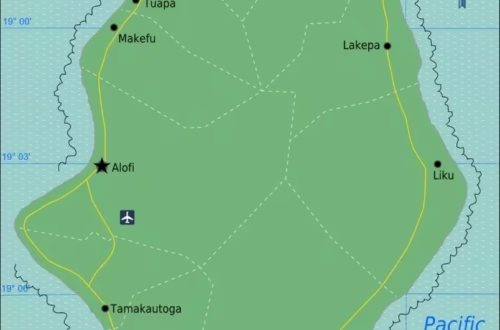
The Great Blue Expanse: A Tale of the Pacific
1. Introduction to the Pacific Ocean
The Pacific Ocean is the largest ocean on Earth. It is important for climate, biology, trade, and economy.

2. Area and geography of the Pacific Ocean
The Pacific Ocean covers an area of approximately 165.25 million km² and is bounded by:
To the west, it borders Asia and Australia.
To the east, it borders the Americas.
The northern part extends to the Bering Sea, where it joins the Arctic Ocean.
The southernmost part reaches the Antarctic Ocean.
The average depth of the Pacific Ocean is 4,000 meters. And here is the deepest abyss ever recorded, the Mariana Trench. The depth of the trench is up to 10,928 meters.
3. Ecology and Biology the Pacific Ocean
The Pacific Ocean has one of the richest and most diverse ecosystems in the world. The marine ecosystem here is divided into many characteristic regions.
3.1 Coral reefs and coastal ecosystems
The Pacific Ocean has many large coral reefs, providing habitat for marine life:
- The Great Barrier Reef (Australia) is home to more than 1,500 species of fish and many rare animals such as sea turtles, rays, sharks.
- The Coral Triangle (Amazon of the Seas) with the highest biodiversity density in the world.
3.2 Deep sea ecosystem
The deep seas of the Pacific Ocean harbor many mysterious and uniquely adapted creatures:
- Mariana Trench – home to Mariana devilfish and chemosynthetic bacteria, which live under extreme pressure.
- Hydrothermal area – an underwater volcanic area, home to eyeless white shrimp, giant tube worms.
3.3 Archipelago and estuarine ecosystems
In addition, the Pacific islands such as Hawaii, Galápagos, Fiji have rich ecosystems:
- The Galápagos Islands – Darwin’s research site, home to Galápagos tortoises and marine iguanas.
- The Mekong and Amazon estuaries – a freshwater and saltwater intermixing environment, home to brackish water dolphins and sturgeon.
4. Economic and commercial importance of the Pacific Ocean
The Pacific Ocean is undeniably the lifeblood of international trade. The region plays a vital role in the transport of goods, energy, raw materials and consumer products.
4.1 Important seaports
- Shanghai (China) – the world’s busiest port
- Los Angeles (USA) – the main trading center of North America
- Yokohama (Japan) – one of the oldest and most important seaports in Asia
4.2 Fishing and exploitation of marine resources
The Pacific Ocean is rich in marine resources:
- Fishing: Provides the majority of the world’s tuna, salmon and seafood
- Oil and gas: Offshore oil fields in Australia, Indonesia and the US play a major role in the world’s energy market
- Deep-sea mining: Contains many rare metals such as manganese, cobalt and nickel
5. Challenge and protect the Pacific Ocean
Despite its rich resources, the Pacific faces many serious challenges that require urgent attention and action from the international community.
5.1 Climate change and sea level rise
- Rising ocean temperatures: Causing coral bleaching, severely affecting marine ecosystems
- Storms and super typhoons: Due to climate change, storms are becoming stronger, causing great damage to island nations
- Rising sea levels: Threatening the existence of many small island nations such as Tuvalu, Kiribati
5.2 Plastic waste pollution
- The Great Pacific Garbage Patch is an area where millions of tons of plastic waste accumulate, endangering marine ecosystems
- Microplastics in seawater have affected the food chain and human health.
5.3 Overexploitation of fisheries
- Destructive fishing methods such as trawling and explosives are severely depleting fish populations
- Many fish species such as bluefin tuna and sharks are threatened with extinction due to unsustainable fishing
5.4 Measures to protect the Pacific
- Establishing marine reserves: Countries have been expanding no-fishing zones to restore biodiversity
- International cooperation: Paris Agreement, organizations such as UNESCO, WWF are actively protecting marine ecosystems
- Promoting the blue economy: Developing ecotourism, renewable energy to reduce negative impacts on the ocean
6. Conclude
The Pacific Ocean is not only the largest ocean but also an important economic and biological pillar of the planet. However, threats from climate change, environmental pollution and unsustainable resource exploitation are posing major challenges.
Protecting and sustainably managing the Pacific Ocean is a shared global responsibility to ensure sustainable development for future generations.
Reference source:
- National Geographic
- NOAA – Cơ quan Quản lý Khí quyển và Đại dương Hoa Kỳ
- Báo Cáo Liên Hợp Quốc về Biến Đổi Khí Hậu
- The Ocean Portal – Smithsonian





One Comment
Pingback: